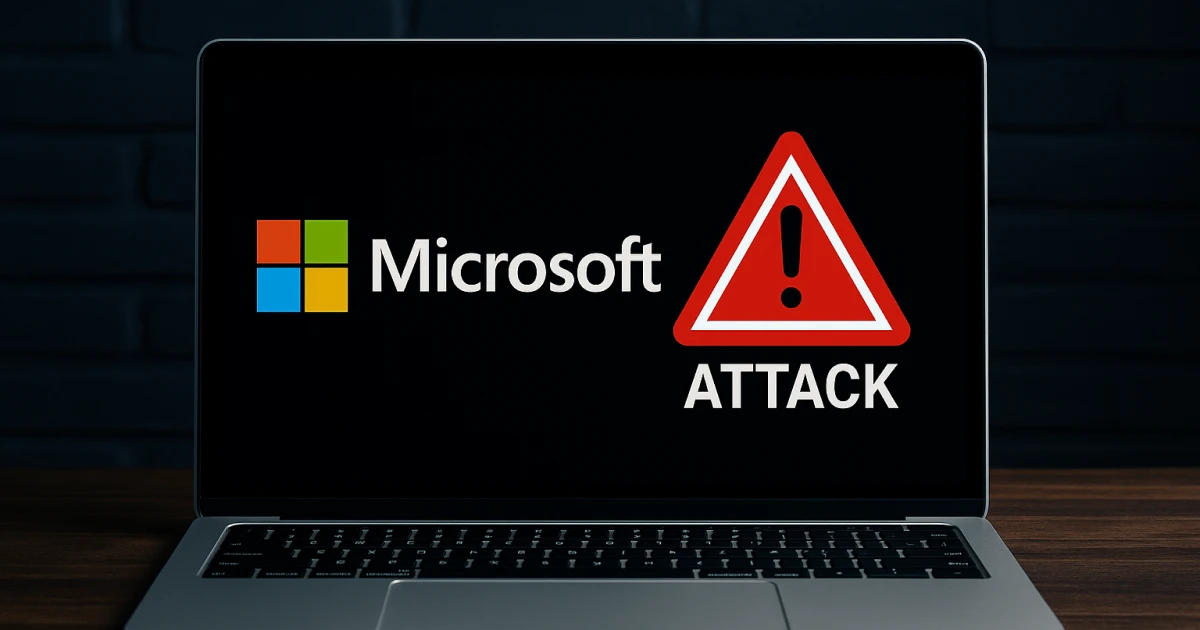Do you remember the days when mundane and repetitive tasks were the norm in every office? Endless clicks through spreadsheets, copying data from one system to another, and responding to the same emails day in and day out. All of them were necessary, but let’s face it – it was also draining us of time, resources, and especially energy.
But times have changed! With the advent of RPA, as businesses, we are now able to automate these rule-based tasks that were previously manually performed. And truth be told, RPA is a technology that keeps giving. You can even say that it’s a trend in itself. The widespread adoption of RPA transcends the term “trend” though, as it has become a full-on industry.
With the help of RPA, companies can automate tedious processes with the assistance of robots. Freeing up valuable time for people to focus on more complicated and creative work is one of the RPA’s main benefits. And it’s not something that we want to overlook.
Look! Multiple trends are shaping how RPA operates and influences the processes in a business. And in the present, it’s pivotal to keep up with every one of them. No one wants to be left behind, especially technology-wise.
1. Artificial intelligence and Robotic Process Automation are a match made in heaven
These two technologies complement each other so much! How? Well, AI enhances RPA by allowing software robots to learn and adapt to new conditions. For example, instead of following pre-programmed instructions, the robots may now make judgments based on real-time data. Like people, after all. It can be a scary thought, but we are nowhere near an artificial intelligence apocalypse, so do not worry. Employ AI in your daily RPA processes. It’s worth it.
By merging RPA and AI, you will not only get a robot that can perform monotonous tasks effortlessly, but it will also recommend improvements to procedures and workflows through its data-gathering function. Of course, the recommendations should be analyzed by a human being to ensure that they are correct and will improve the processes.
But this union between artificial intelligence and RPA is already disrupting industries. Banking, healthcare, manufacturing, and logistics are some of the victims. And this is just the beginning for RPA and AI, believe us. It’s both exciting and scary to think of these technologies a few decades from now.
Subscribe to our newsletter
2. The mass adoption of cloud-based RPA is coming
And the good news is that RPA no longer needs expensive infrastructure or on-premises software. That’s right! You can now automate operations from anywhere, at any time, and without spending a huge portion of your budget. The deal with cloud-based RPA is that it saves money while also allowing for scalability, flexibility, and faster implementation. So, yes, we can understand why the mass adoption of cloud-based RPA is not a thing of the past anymore.
Thankfully so! The ability to automate a procedure on the go, without hardware limits or software changes, is something that we have demanded for a long time. Moreover, cloud-based RPA isn’t just for large enterprises! Small and medium-sized businesses may also reap the benefits of this technology.
If you’re not convinced yet, let us give you an example. PwC is one example of a large corporation that has effectively embraced cloud-based RPA. Even though they used RPA for years, and it worked in their processes, still, something was missing. With cloud computing, PwC achieved its automation objectives and lowered its maintenance costs.
3. Hyper Automation - a must-have for every RPA process
There are complicated processes that require decision-making and human judgment. Your classic RPA won’t excel at providing anything else than just automating repetitive operations. But with hyper-automation, you can integrate and automate end-to-end processes by merging RPA with AI, machine learning, or process mining. It sounds complicated, but in the long run, it’s worth it.
Think about it for a second. A robot that does not only everyday chores but also employs machine-learning algorithms to make data-driven judgments? That’s not something you see everywhere. Therefore, it’s the perfect time to employ it in your business! It’s a trend that will gain more traction as years go by since it’s more difficult to implement than the others we mentioned here.
Human mistakes and high processing times can keep a business from achieving its full potential. With hyper-automation, however, organizations can increase productivity and accuracy while decreasing expenses.
Take a hospital, for example! By employing this technology, the hospital will be able to automate patient scheduling, insurance verification, and billing operations. This will be of great aid to the personnel, leaving them the time to focus on providing superior medical care and concentrating on patients.
4. RPA becomes more collaborative!
It’s becoming more obvious that RPA is most effective when used in partnership with people. Organizations can combine RPA with cloud computing to make it easier for people to collaborate with each other. The great news is that RPA enhances human workers’ talents rather than replacing them - resulting in more efficient and successful operations that have a human touch attached to them!
Collaborative RPA not only increases task accuracy and productivity but also decreases mistakes and boosts quality. When people come together, the results are always better. Humans and robots can find the middle ground and work together to harness their individual strengths and shortcomings. The result? Greater outcomes than each could achieve alone.
It’s the way it works now! And we hope that in the future, this will be the case. Collaboration between humans and AI. Not humans vs. AI. We do not ask for much.
5. RPA will meet the needs of every business
That’s true! Increased integrations imply that RPA can operate in tandem with other business tools and platforms, making it easier to automate end-to-end processes and unlock even more value. After all, RPA is not a stand-alone solution! It’s a component of a larger technological ecosystem. It encompasses everything from data analytics to CRM solutions.
Businesses get the chance to increase the value of their RPA investments by adopting additional integrations. Look at CCEP (Coca-Cola EuroPacific Partners), for example. They have used RPA to automate day-to-day business processes such as invoice processing or inventory management. But, they recognized that it’s important to utilize RPA’s potential at full scale. Therefore, they needed to combine it with other technologies and systems that were able to reach that goal.
To do that, Coca-Cola collaborates with Blue Prism, which is an RPA software provider, to connect its RPA program with its current SAP ERP system. Because of this, they were able to automate their most difficult processes without requiring manual involvement.
The future of RPA looks bright, there’s no question about it. The trends mentioned above should be on every company’s radar. And be sure to do your research from time to time, as it’s a fast-moving industry. Who knows? You may just find a way to leverage this technology to achieve your own goals and make a positive impact in your corner of the world.
1. Artificial intelligence and Robotic Process Automation are a match made in heaven
These two technologies complement each other so much! How? Well, AI enhances RPA by allowing software robots to learn and adapt to new conditions. For example, instead of following pre-programmed instructions, the robots may now make judgments based on real-time data. Like people, after all. It can be a scary thought, but we are nowhere near an artificial intelligence apocalypse, so do not worry. Employ AI in your daily RPA processes. It’s worth it.
By merging RPA and AI, you will not only get a robot that can perform monotonous tasks effortlessly, but it will also recommend improvements to procedures and workflows through its data-gathering function. Of course, the recommendations should be analyzed by a human being to ensure that they are correct and will improve the processes.
But this union between artificial intelligence and RPA is already disrupting industries. Banking, healthcare, manufacturing, and logistics are some of the victims. And this is just the beginning for RPA and AI, believe us. It’s both exciting and scary to think of these technologies a few decades from now.
Subscribe to our newsletter
2. The mass adoption of cloud-based RPA is coming
And the good news is that RPA no longer needs expensive infrastructure or on-premises software. That’s right! You can now automate operations from anywhere, at any time, and without spending a huge portion of your budget. The deal with cloud-based RPA is that it saves money while also allowing for scalability, flexibility, and faster implementation. So, yes, we can understand why the mass adoption of cloud-based RPA is not a thing of the past anymore.
Thankfully so! The ability to automate a procedure on the go, without hardware limits or software changes, is something that we have demanded for a long time. Moreover, cloud-based RPA isn’t just for large enterprises! Small and medium-sized businesses may also reap the benefits of this technology.
If you’re not convinced yet, let us give you an example. PwC is one example of a large corporation that has effectively embraced cloud-based RPA. Even though they used RPA for years, and it worked in their processes, still, something was missing. With cloud computing, PwC achieved its automation objectives and lowered its maintenance costs.
3. Hyper Automation - a must-have for every RPA process
There are complicated processes that require decision-making and human judgment. Your classic RPA won’t excel at providing anything else than just automating repetitive operations. But with hyper-automation, you can integrate and automate end-to-end processes by merging RPA with AI, machine learning, or process mining. It sounds complicated, but in the long run, it’s worth it.
Think about it for a second. A robot that does not only everyday chores but also employs machine-learning algorithms to make data-driven judgments? That’s not something you see everywhere. Therefore, it’s the perfect time to employ it in your business! It’s a trend that will gain more traction as years go by since it’s more difficult to implement than the others we mentioned here.
Human mistakes and high processing times can keep a business from achieving its full potential. With hyper-automation, however, organizations can increase productivity and accuracy while decreasing expenses.
Take a hospital, for example! By employing this technology, the hospital will be able to automate patient scheduling, insurance verification, and billing operations. This will be of great aid to the personnel, leaving them the time to focus on providing superior medical care and concentrating on patients.
4. RPA becomes more collaborative!
It’s becoming more obvious that RPA is most effective when used in partnership with people. Organizations can combine RPA with cloud computing to make it easier for people to collaborate with each other. The great news is that RPA enhances human workers’ talents rather than replacing them - resulting in more efficient and successful operations that have a human touch attached to them!
Collaborative RPA not only increases task accuracy and productivity but also decreases mistakes and boosts quality. When people come together, the results are always better. Humans and robots can find the middle ground and work together to harness their individual strengths and shortcomings. The result? Greater outcomes than each could achieve alone.
It’s the way it works now! And we hope that in the future, this will be the case. Collaboration between humans and AI. Not humans vs. AI. We do not ask for much.
5. RPA will meet the needs of every business
That’s true! Increased integrations imply that RPA can operate in tandem with other business tools and platforms, making it easier to automate end-to-end processes and unlock even more value. After all, RPA is not a stand-alone solution! It’s a component of a larger technological ecosystem. It encompasses everything from data analytics to CRM solutions.
Businesses get the chance to increase the value of their RPA investments by adopting additional integrations. Look at CCEP (Coca-Cola EuroPacific Partners), for example. They have used RPA to automate day-to-day business processes such as invoice processing or inventory management. But, they recognized that it’s important to utilize RPA’s potential at full scale. Therefore, they needed to combine it with other technologies and systems that were able to reach that goal.
To do that, Coca-Cola collaborates with Blue Prism, which is an RPA software provider, to connect its RPA program with its current SAP ERP system. Because of this, they were able to automate their most difficult processes without requiring manual involvement.
The future of RPA looks bright, there’s no question about it. The trends mentioned above should be on every company’s radar. And be sure to do your research from time to time, as it’s a fast-moving industry. Who knows? You may just find a way to leverage this technology to achieve your own goals and make a positive impact in your corner of the world.




.webp)











